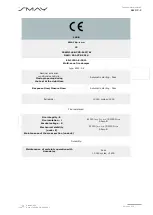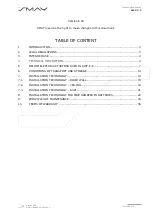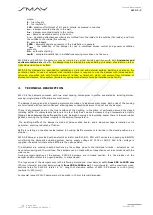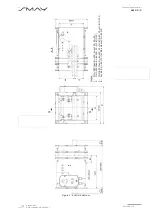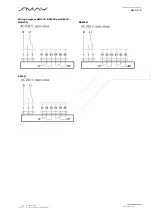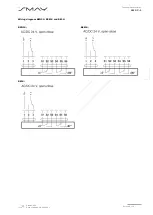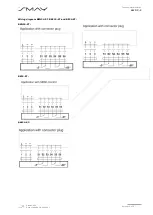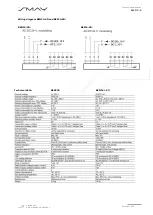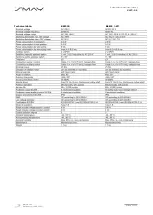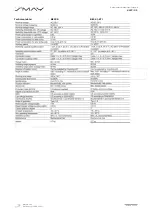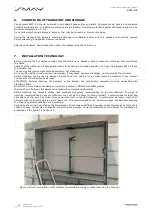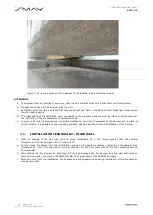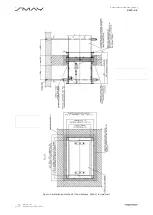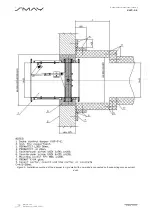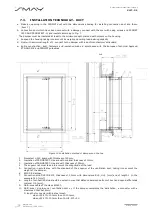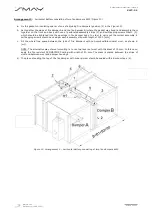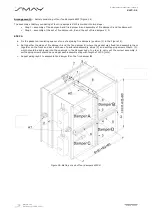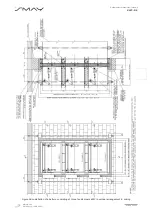
Wersja 1.00
Data edycji: 16.09.2022 r.
Strona 14 z 35
Dokumentacja techniczno-ruchowa
KWP-P-E
6.
CONDITIONS OF TRANSPORT AND STORAGE
Fire dampers KWP-P-E should be stored in cardboard boxes and/or on pallets. Dampers should have a pre-protected
actuator cardboard box. Fire dampers should be stored indoors, providing protection against atmospheric agents, at a
minimum temperature of +5°C.
Do not allow mechanical damage of damper, that may be caused e.g. blows or dropping.
During the transport the dampers should be package in cardboard, and/or put on a pallets and should be secured
before relocating, and against weather conditions.
After each transport, visual inspection of each fire damper must be carried out.
7.
INSTALLATION TECHNOLOGY
Before installing the fire dampers, make sure that there is no damage, during transport or storage, that could block
the baffle.
Check that the baffle can be opened and closed (full opening and closing position). To open fire dampers KWP-P-E use
the actuator key.
The opening and closing must proceed smoothly (not stepwise).
Do not pull by baffle to open or close fire damper, it may cause permanent damage, not covered by the warranty.
Before installing, secure the fire damper, by dust and dirt, using a foil or other screening material. It can prevent
components of fire damper by damage.
ATTENTION: Distance between fire dampers or fire damper and construction elements must be compatible with
standard 1366-2:
Minimal 200 mm between fire damper, which are installed in different ventilating wires,
Minimal 75 mm between fire damper and construction element (wall/ceiling).
Before installing fire dampers please read assembly technology recommended by the manufacturer. The way of
installing recommended by one manufacturer may not be the same for other dampers. Recommended material and
dimensions of the openings follow from experience from conducted research. In rectangular dampers, most of all
dampers with cross-sectional area more than 1 m2, it is recommended to use mounting wedge and spreader securing
the housing against squeezing during assembly.
Squeezing the housing can change the dimensions of slot between baffle and housing, correct dimensions of this slot is
needed to keep correct way of opening and closing the damper. Correct preparation of the damper for installation is
presented on the figure 2 and figure 3.
Figure 2.Correct preparation of the damper for installation (using spreader securing the housing)


